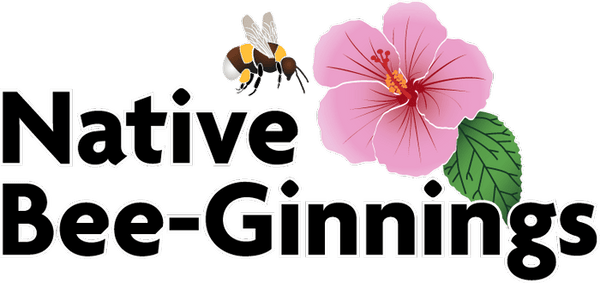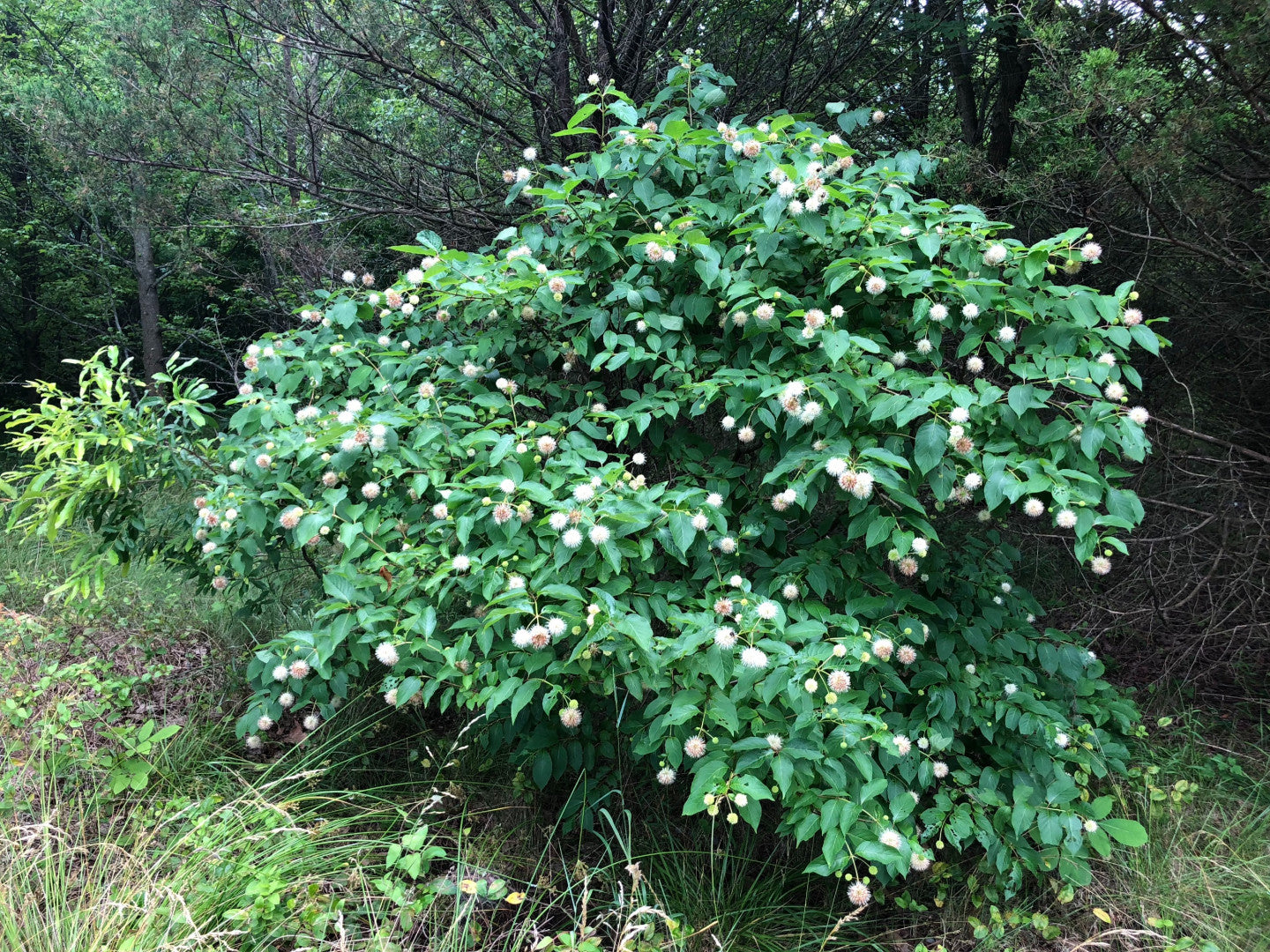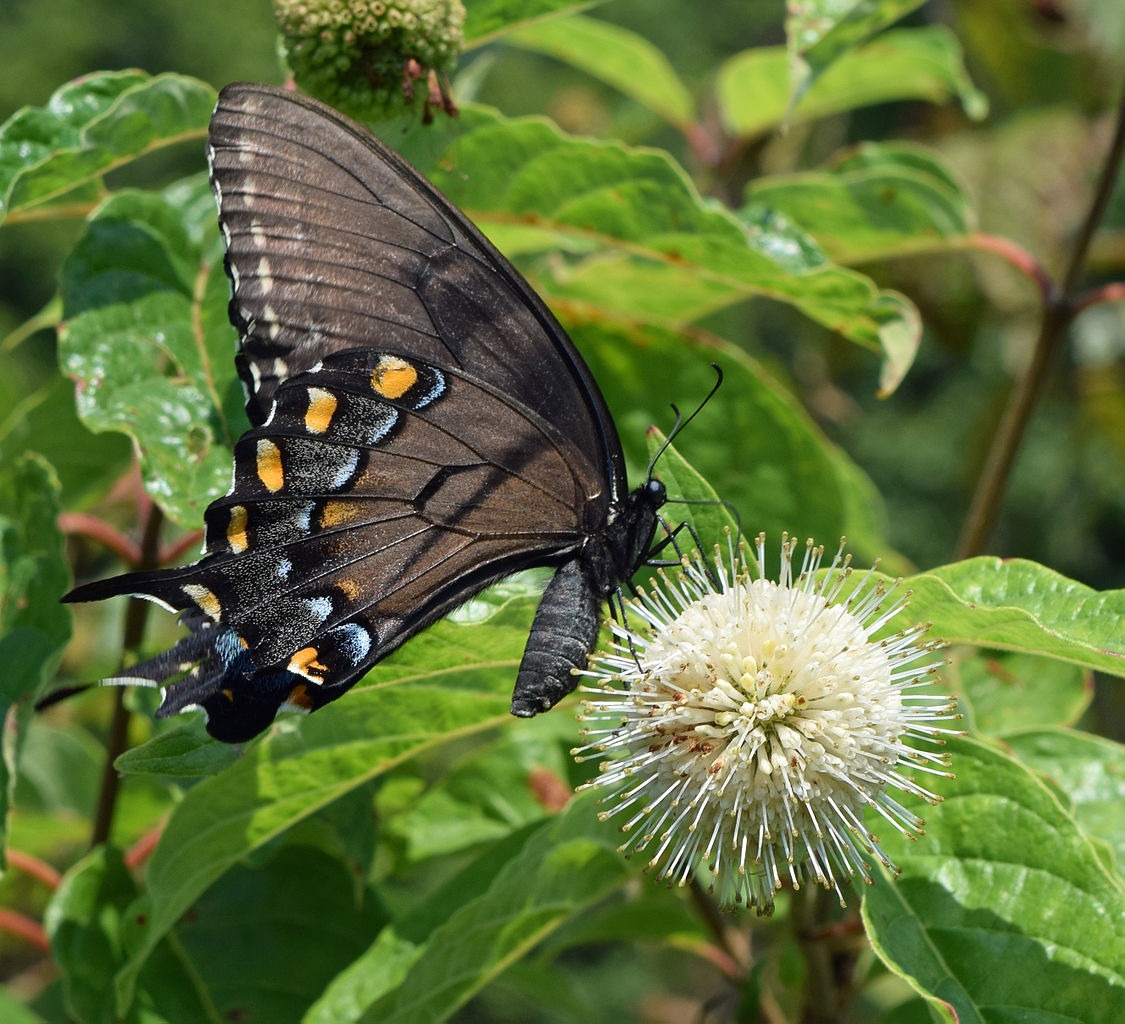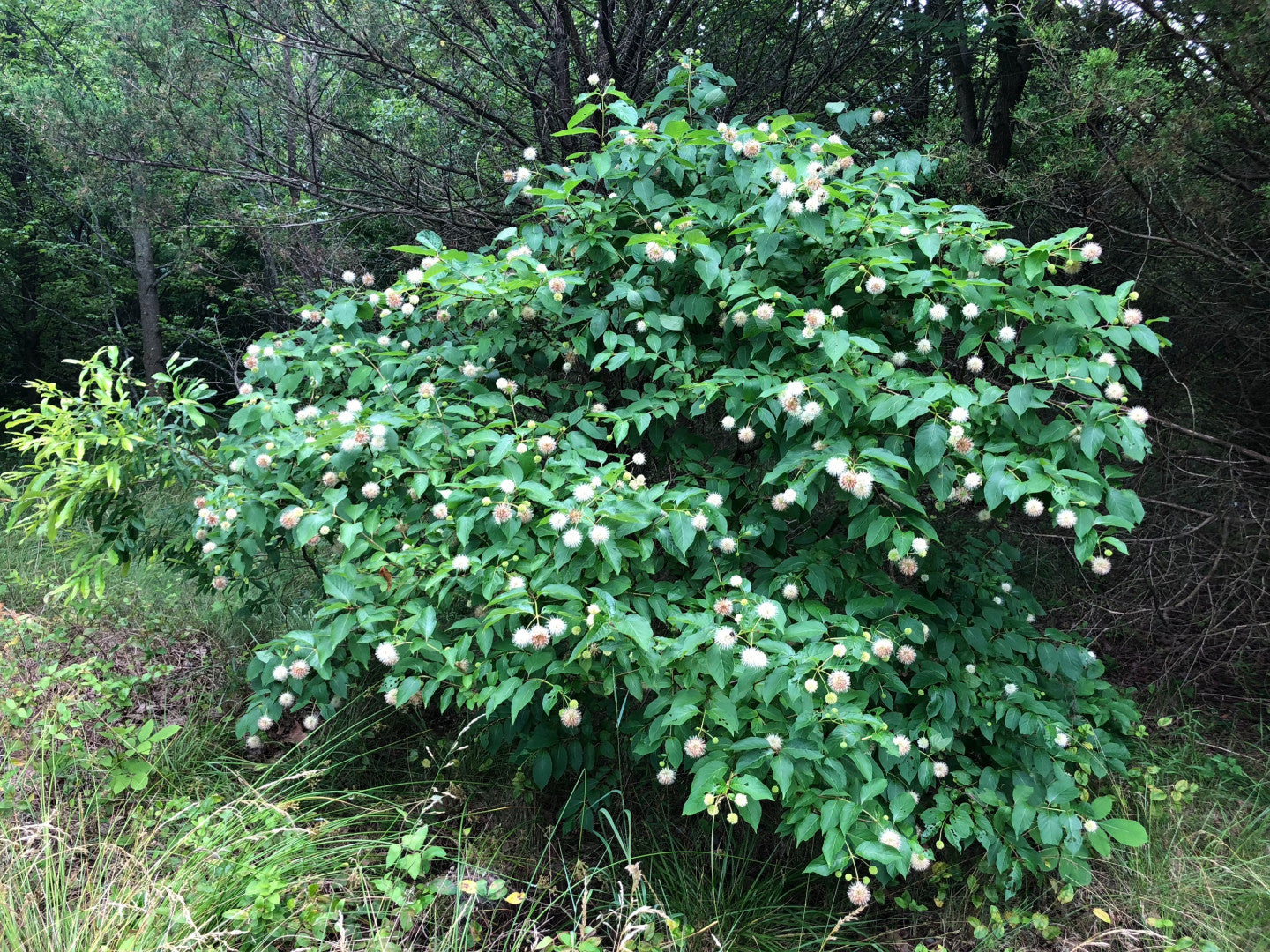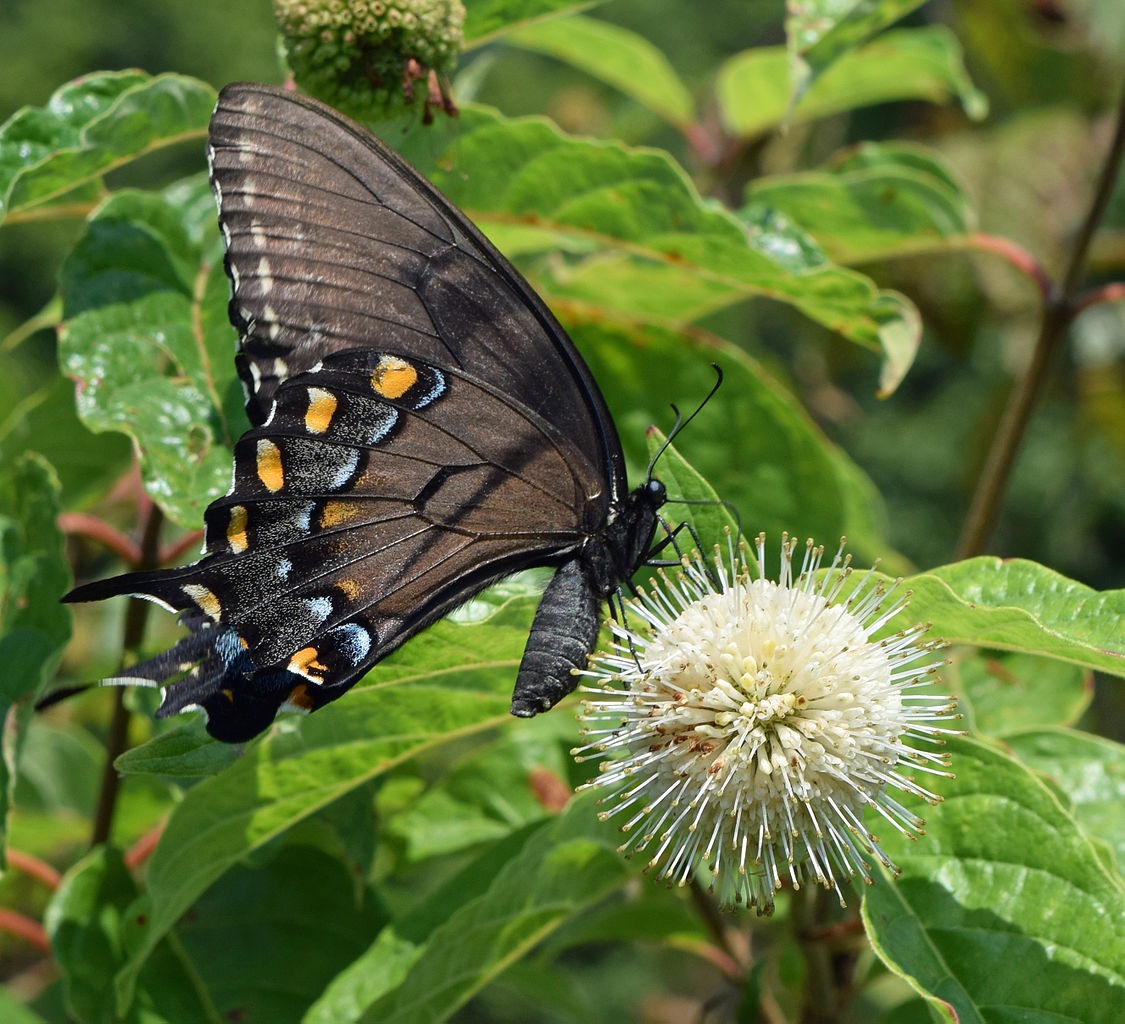About This Plant
Cephalanthus occidentalis, or Buttonbush, is a distinctive wetland shrub valued for its unique spherical flowers and ecological significance. Reaching 6–12 feet in height, it thrives in moist to wet soils, making it a perfect choice for rain gardens, pond edges, and riparian buffers. While it prefers full sun, it can tolerate partial shade and occasional standing water, making it one of the best native shrubs for stabilizing wetland habitats.
From mid to late summer, Buttonbush produces fragrant, globe-shaped white flower clusters resembling pincushions. These nectar-rich blooms attract diverse pollinators, including bees, butterflies, and hummingbirds. As summer fades, the flowers transition into hard, reddish-brown seed heads that persist into winter, providing a critical food source for waterfowl, songbirds, and other wildlife.
Buttonbush’s glossy green foliage adds lush texture throughout the growing season before turning golden-yellow in fall. Its naturally open, irregular branching structure creates valuable cover for birds and small mammals, enhancing its role in wildlife-friendly landscapes. Although primarily found along riverbanks and wetlands, it adapts well to garden settings, particularly in rain gardens or low-lying areas prone to seasonal flooding.
Highly durable and nearly pest-free, Cephalanthus occidentalis is an excellent choice for gardeners looking to support native biodiversity while adding an eye-catching structural element to the landscape. Whether planted for pollinator appeal, wildlife benefits, or ornamental beauty, this wetland shrub is an ecological powerhouse with year-round interest.
